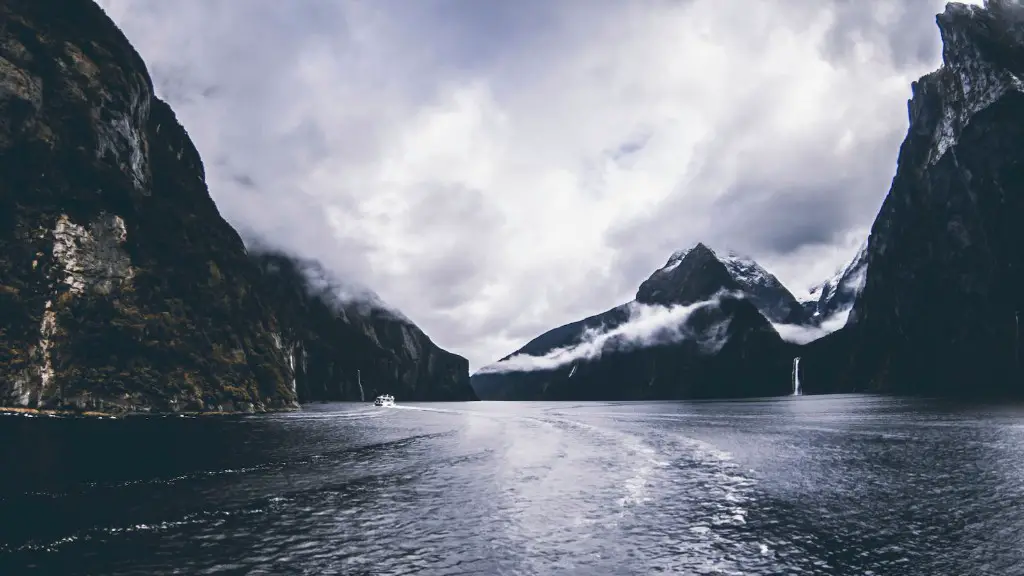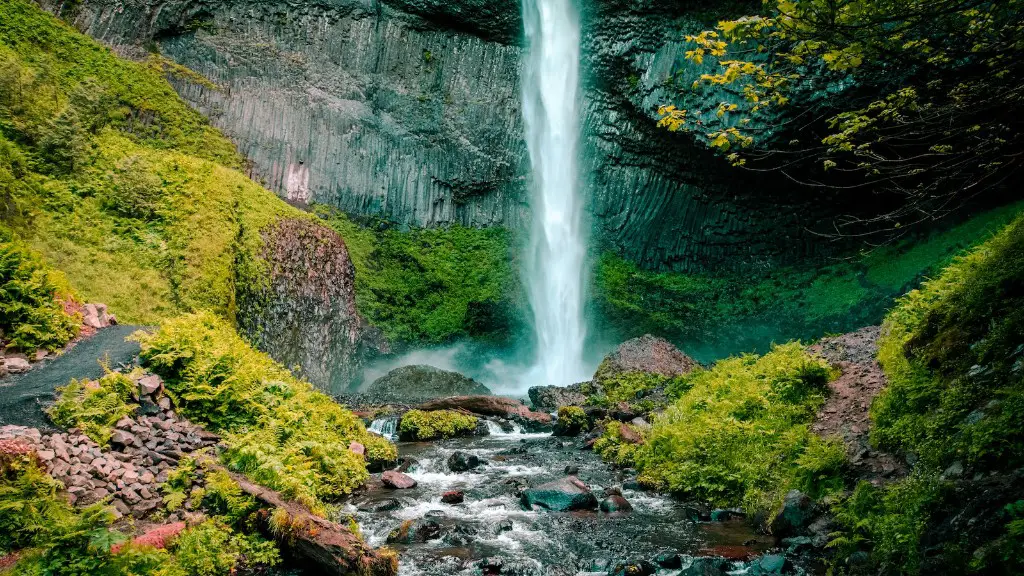The Mississippi River is one of the most fascinating waterways in the United States. It has attracted generations of adventurers and is one of the oldest waterways in the country, spanning more than 2,345 miles from its source in Minnesota to the Gulf of Mexico. But can you actually sail on this grand river?
It is not easy to give a direct answer to this question as the regulations for sailing on the Mississippi change depending on the area. The mainfactors to consider are the navigational obstacles, speed limits and the nature of the waters.
Navigation on the Mississippi is regulated by the Army Corps of Engineers, who manage the condition of the river. They set the maximum size and type of craft that can navigate on it.
Generally speaking, sailboats less than 65 feet long are able to safely traverse the Mississippi in certain areas,provided certain conditions are met. Some areas of the river require sailboats to have an additional restrictive speed limit of 5mph or less whereas others may allow sailing at regular motorboat speeds.
One of the greatest navigational obstacles a sailing boat will encounter is the Mississippi’s numerous sandbars and shoals. Navigation on the Mississippi is not simply a matter of sailing up or downstream, rather it is more like navigating a maze. This means that a sailor must have a thorough knowledge of the river and its obstacles. Despite the Army Corps of Engineers helping to make the river safer for larger boats, sandbars remain a challenge for all boaters.
Sailing too fast on the Mississippi is also dangerous. This is especially true when the river is in flood and its volume and speed is increased. Sailboats should use caution and respect the speed limit enforced in the area. As an example, the State of Arkansas has stipulated that boats in excess of 28 meters may not exceed more than 10 knots when navigating in the navigational channels.
In conclusion, it is possible to sail on the Mississippi River and many people do it safely. However, it is important to do your research in advance and plan your journey carefully. Knowing the navigational channels, sandbars and speed limits will help you to stay safe and enjoy the fantastic sights that the river has to offer.
The Mississippi River and its History
The Mississippi River has been a key part of American history since the arrival of the first European settlers. It was first explored by French explorers in the seventeenth century, who were among those to sail on the river.
The Mississippi had been a major trade route since before the arrival of Europeans, used by Native American tribes to move goods and people. In the early nineteenth century, it was used by travelers to explore the interior of the United States, which enabled the expansion of towns, cities and plantations along its banks.
During the American Civil War, the Mississippi was a key battle ground and a major trade route. It was also used by the Union and Confederacy to move troops and supplies. Control of the river was crucial for either side to win the war.
After the Civil War, the river was used to bolster commerce and transport goods. For example, cotton was an important commodity and was transported on the river from the plantations of the American South to the cities of the American North.
The Mississippi has always been an important transport route and has played an integral role in the history of the United States. It has seen many stories unfold and has been witness to some of the most defining moments in American history.
The Mississippi River and its Wildlife
The Mississippi River supports a complex ecosystem full of incredible plants and animals. The river’s vastness means that it supports a wide range of habitats, from wetlands and marshes to grassy prairies, which in turn support a wide variety of wildlife.
The Mississippi is home to many species of birds, fish, reptiles and mammals, some of which are threatened or endangered. For example, the river is home to some of the last remaining populations of the endangered pallid sturgeon. The river is also home to the American alligator, which is one of the few species of crocodilians still found in the United States.
The river is also home to a wide variety of fish, ranging from small bait fish up to large catfish. It is also home to some of the more unique fish species such as the sandbar shark and the alligator gar, which can grow up to nine feet long
The Mississippi supports a vast and diverse array of wildlife and is an important habitat for many species. It is important to remember the importance of preserving this precious habitat and to do our part to help conserve its wildlife.
Mississippi River Cruises
Cruises on the Mississippi River are a popular way to explore the natural beauty of the river and its wildlife. Mississippi River cruises can vary in length, from a few days to a few weeks. Some cruises focus on specific themes such as wildlife spotting, fishing or history, while others take in a variety of sights and locations.
Cruising on the Mississippi is a great way to get off the beaten track and explore some of the lesser known towns and villages along its banks. It is also an opportunity to appreciate the beauty and vastness of the river and to observe some of the fascinating wildlife it supports.
The Mississippi is an important waterway that has had a long and fascinating history. Cruising on it is a unique experience, and one that can give you an insight into its fascinating past.
Sailing on the Mississippi River
Sailing is the perfect way to appreciate the beauty and power of the Mississippi River. It requires skill, knowledge and the ability to read the conditions, but the reward is great. Being able to make use of the powerful current and to experience the sheer majesty of the river is an incomparable experience.
The Mississippi River is one of the most powerful rivers in the world, and sailing on it is an experience like no other. It is an opportunity to witness the power and beauty of nature, and to see a part of the United States that not many people get to witness.
Although sailing on the Mississippi River may seem daunting, it is an achievable task. By researching the river and carefully planning your journey, you can ensure that you have a safe and enjoyable experience.
Sailing on the Mississippi River vs Sailing on Lakes and Seas
Sailing on the Mississippi River is a unique experience that is quite different from sailing on lakes and seas. One of the main differences is the navigational system. On the Mississippi, you must be aware of the sandbars and shoals and be familiar with the navigational channels. On other bodies of water, you must be aware of currents, rocks and other obstacles.
The second major difference is the power of the water. On the Mississippi River, the current can be strong, especially in flood conditions. This means that you need to take constant precautions as you sail, and be cognizant of the speed restrictions in place in the area. On other bodies of water, you may be able to ride the currents and make use of them, but on the Mississippi, you must be prepared to handle the power of the river.
The third and final major difference between sailing on the Mississippi River and other waterways is the type of boat you need. Boats must be specifically equipped to handle the conditions on the Mississippi, and some boats, such as sailboats over 65 feet, may not be allowed to navigate the river at all.
Safety Tips for Sailing on the Mississippi River
When preparing to sail on the Mississippi River, it is important to consider safety first. Make sure you research the navigational channels, sandbars and speed restriction in the area and plan your journey accordingly.
It is also important to make sure you are familiar with the navigational instruments you will be using and that your boat is equipped with the proper safety equipment. Check your charts for the ranges of lights and buoys in the area and make sure you have proper signaling devices in the event of an emergency.
Make sure you have a plan for the trip and that all crew members know it. Ensure everyone aboard knows the routes, destinations and use of signaling devices. Also make sure everyone is wearing a lifejacket at all times and that the boat is properly equipped with fire extinguishers, flares and a first aid kit.
Finally, be aware of the weather conditions and the potential for storms. Monitor the wind, tides and current and plan your journey accordingly. Always be prepared to change routes or turn back if conditions become too dangerous.





